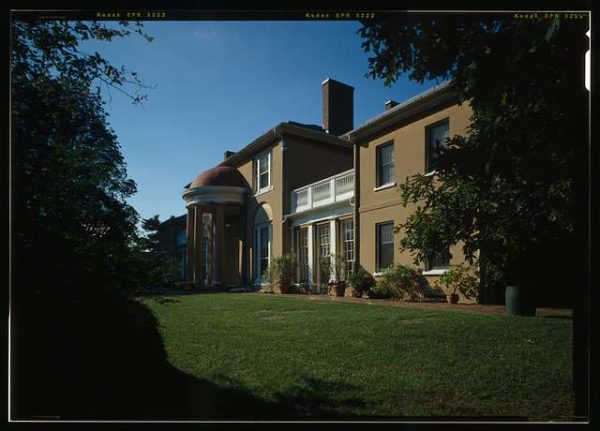A new installation intended to uncover the lives of the generations of free and enslaved people who lived and worked at the Tudor Place, a historic Georgetown property that now serves as a museum, opened Feb. 6.
In collaboration with descendants of those featured, the installation and its accompanying guided tour, “Ancestral Spaces: People of African Descent at Tudor Place,” invite visitors to explore the often overlooked stories of the enslaved and free people of African descent who once built and worked at the historic house and garden. The Tudor Place was home to six generations of the Peter family, which included Martha Custis Peter — granddaughter of Martha Washington and step-granddaughter of George Washington — and her husband Thomas Peter, from 1805 until the passing of the last owner in 1983.
Margie Corwin, a docent for the installation, said the installation reflects the desire of museum officials and leadership to bring to light the history of those who were enslaved by the Peter family.
“This project is the culmination of that work, the knowledge that was gained by all of the really hard work to look into and understand enslavement better at Tudor Place, and its board believes it’s time to learn this,” Corwin told The Hoya.
In 2021, Tudor Place applied for and received a two-year grant from the Institute of Museum and Library Sciences to research the history of enslaved individuals at the property and to create an installation to inform visitors about the topic.
Although copious amounts of information exist about the Peter family, as the guided tour explains, the history of the people who built and served them is difficult to locate and requires piecing together property and familial records as well as oral histories.
The tour takes visitors through the service entrance into the dining hall, then through the other rooms. Throughout its duration, the tour highlights features like the intricate ceiling moldings crafted by plaster artisan Sam Collins and the garden landscaped by self-emancipated John Luckett and tells the story of Hannah Pope, the last woman of three generations to be enslaved at Tudor Place.
Ianna Recco, art historian and collections manager at Tudor Place, said she was involved in all aspects of the creation of this installation, from designing the updated tour to collaborating directly with descendants to reimagining the spaces of the house on display.
“They are very much the heart of this installation and their proximity to their ancestors is what resonates with visitors,” Recco told The Hoya.

Recco said the installation aims to inspire visitors and influence how they view the history of not only historic properties like Tudor Place but the larger Georgetown area as well.
“Once visitors are introduced to these stories at Tudor Place, it will hopefully affect how they view the greater landscape of Georgetown as one where community, activism and culture thrived, but also once where significant historical erasure and discriminatory displacement have occurred,” Recco said.
The installation teaches visitors about the history of Tudor Place specifically but also deepens their understanding of the greater neighborhood of Georgetown, where some enslaved people, such as Luckett, lived with their free spouses and raised generations of families after emancipation.
The curation of the “Ancestral Spaces” exhibit involved extensive collaboration with members of the descendants of Tudor Place, such as Karl Haynes, Ann Chinn and Jerolyn Cole, as well as the advisory committee, which included representatives from the Black Georgetown Foundation, alongside the collections department of Tudor Place. Beyond behind-the-scenes contributions, the descendants bring the installation to life through audio recordings of their voices, an introductory welcome video and family photographs displayed in many rooms.
Chinn, a descendant of Pope, said it is important for historical sites to allow Black descendants of enslaved people to take control of shaping the narrative of their ancestors as Tudor Place did.
“I believe that those of us who are descendants of the enslaved have got to be a part of the decision making. We can’t be the sideline commentaries. And I think that’s what’s occurred at Tudor Place,” Chinn told The Washington Informer.
Although the installation officially leaves the site in April, Corwin said the Tudor Place staff plans to use feedback from visitors to implement these stories into future tours.
“We’re doing this specific tour through mid to end of April and then I feel confident we will need to incorporate this information into the normal tour. It is too important,” Corwin said.
Recco said she hopes the installation will inspire other historic landmarks to take similar initiatives to more prominently feature enslaved people’s erased pasts and emphasized the importance of collaborating with descendants to unveil and display this history.
“The key element that other historical sites can replicate from Tudor Place’s process is co-curating with descendants and recognizing that they should have decision-making power over their own family stories,” Recco said.
“Another element that sites can model their own projects after is to not relegate these histories to the periphery of their sites, literally isolated to certain spaces or figuratively to solely the theme of labor but rather throughout entire sites with a dedication to communicating the spirit, humanity and longevity of these individuals and families,” she added.








